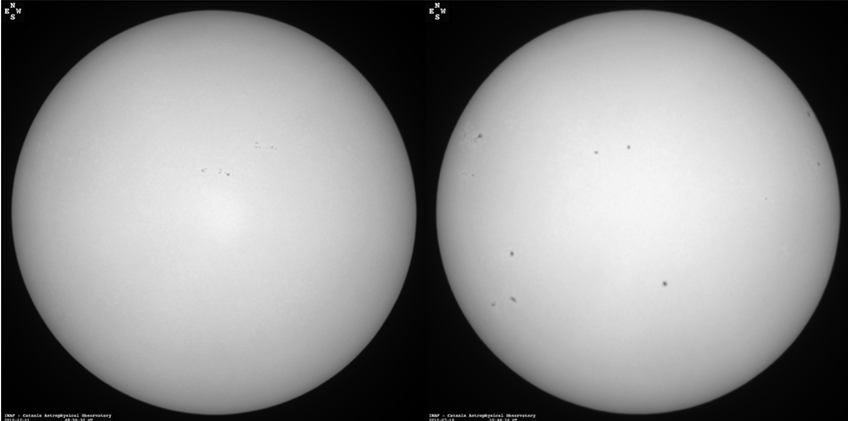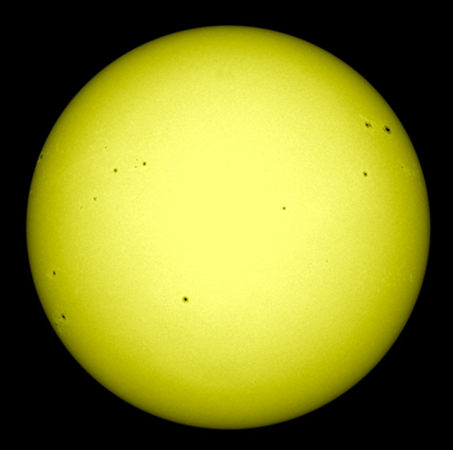The SIDC sunspot bulletin for December 2012 reported a monthly provisional international sunspot number of only 40.8. That is the lowest since February 2012 (32.9). Solar flare activity was in proportion, with no medium flares (M-class) and several days with not even small flares (C-class).
However, it seems that the Sun has taken the New Year's resolution to be more active in 2013. Indeed, during the first week of January, the Sun gradually got freckled with sunspot groups. The difference with just one solar rotation ago is remarkable, as shown by the Catania images underneath. The left image shows the Sun on 11 December 2012, while the right one depicts the Sun on 7 January 2013.

A small movie was created using SDO/AIA4500 images. It shows the sunspot activity from 1 till 7 January 2013. From 4 January onwards, about a dozen of sunspot groups could be observed. Though most of these sunspot groups were well visible, they were also quite simple and relatively small. The *combined* area of all visible sunspot groups was also smaller than some of the big sunspot groups that have already appeared during this solar cycle. Hence, except for an impulsive M-flare on 5 January, these small and simple sunspot groups did not show much significant flaring activity.
This was also the case for NOAA 1640, the biggest group of the pack (top right group in SDO-image underneath). Interestingly, this quite inactive group appeared at heliographic latitude +28°. One has to go back already to January 2012 to find a group of similar size at such elevated latitude (NOAA 1402).

Though a dozen of sunspot groups may have been quite uncommon during this solar cycle so far, the number is by no means exceptional. Indeed, during strong cycles, there may be around 20 sunspot groups visible for days in a row, with usually some big and complex groups too. This was the case for example during several days in 1989, the maximum year of solar cycle 22.
 |
 |





